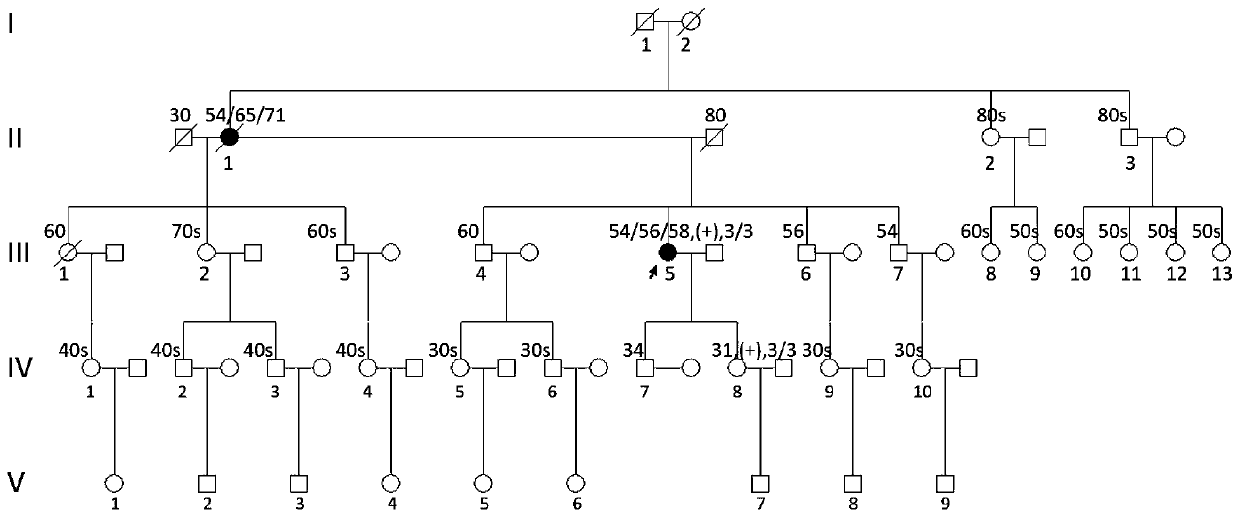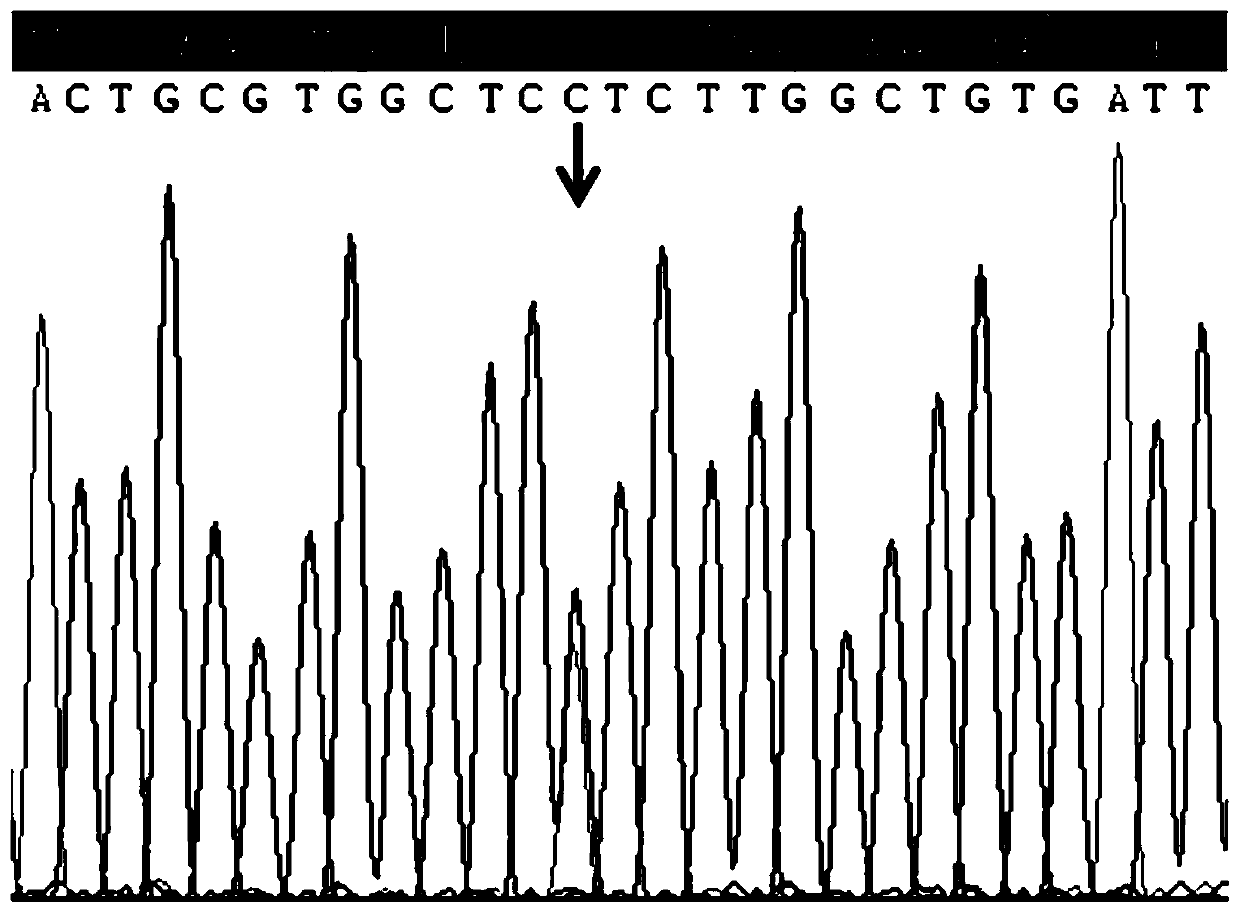Novel mutation of Alzheimer disease, stable transfer cell model and medical application thereof
An Alzheimer's disease, cell technology, applied in the field of biomedicine, can solve problems such as neurotoxicity, weakened carboxypeptidase activity, and increased Aβ peptide production
- Summary
- Abstract
- Description
- Claims
- Application Information
AI Technical Summary
Problems solved by technology
Method used
Image
Examples
Embodiment 1
[0125] Example 1: Screening and sequencing of Alzheimer's disease-causing genes
[0126] 1. Experimental method
[0127] Family collection and genetic testing: Collect clinical data and blood samples from two AD families in the China Familial Alzheimer's Disease Registration Network (CFAN, www.chinacfan.org), screen PSEN1, PSEN2, APP gene mutations and detect APOE genotype. Written informed consent has been obtained.
[0128] 2. Experimental results
[0129] The PSEN1 mutation was found, that is, the two families carried PSEN1I249L and P433S new mutations respectively, and the family diagrams are as follows Figure 1A ,and Figure 1B As shown, the sequencing results are as follows Figure 1C and Figure 1D shown.
[0130] The proband of the I249L mutation family was a 58-year-old housewife who had progressive memory loss for 4 years. She developed personality changes and social withdrawal within 1 year of onset, and her condition gradually worsened. Disorientation and ...
Embodiment 2
[0135] Embodiment 2: cytology experiment
[0136] 1. Experimental method
[0137] (1) Construction of lentiviral expression vector, site-directed mutagenesis and identification
[0138] The pcDNA3.1-wtPSEN1-EGFP plasmid comes from the previous work of our laboratory (Fang Boyan. Study on Pathological Function of Presenilin 1 Gene Mutation in Chinese Familial Alzheimer's Disease [Ph.D.]: Capital Medical University; 2006.). The lentiviral expression vector pLVX-IRES-ZsGreen1 (Clontech, Catalog No.632187), the lentiviral packaging plasmid pSPAX2 (Addgene, Catalog No.12260) and the envelope plasmid pMD2G (Addgene, Catalog No.12259) were provided by Professor Li Hongzhi of Wenzhou Medical University gift 14 .
[0139] Using the pcDNA3.1-wtPSEN1-EGFP plasmid (other plasmids inserted with PSEN1 can also be used), amplify and purify the PCR product by PCR, and recover the target fragment PSEN1. The target fragment PSEN1 can also be prepared by other means known to those skilled ...
PUM
 Login to View More
Login to View More Abstract
Description
Claims
Application Information
 Login to View More
Login to View More - R&D
- Intellectual Property
- Life Sciences
- Materials
- Tech Scout
- Unparalleled Data Quality
- Higher Quality Content
- 60% Fewer Hallucinations
Browse by: Latest US Patents, China's latest patents, Technical Efficacy Thesaurus, Application Domain, Technology Topic, Popular Technical Reports.
© 2025 PatSnap. All rights reserved.Legal|Privacy policy|Modern Slavery Act Transparency Statement|Sitemap|About US| Contact US: help@patsnap.com



